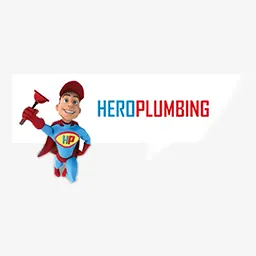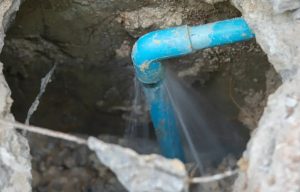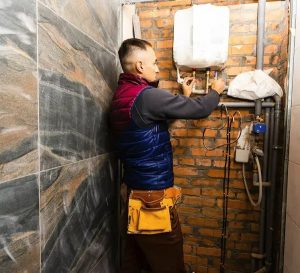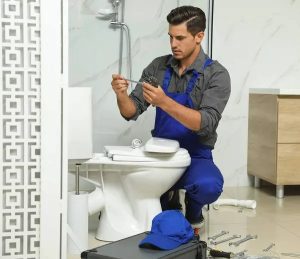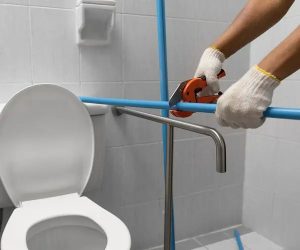Table Of Contents
Toilet Not Flushing
It’s a terrible scenario that we’ve all experienced. You finish your business, hit the button, and the toilet refuses to flush. For most of us, your cheeks blush, and your initial thoughts are indecipherable.
Let’s take a calm look at what went wrong if you have a toilet that isn’t flushing properly and what you can do to get out of that situation. If a gentle whack on the cistern or a silent prayer didn’t help.
Then, let’s look at the likely causes of the problem.
Reasons Why Your Toilet Might Not Flush
Bad flush button
The button that triggers the flushing process in your toilet may break or detach because of constant use. It may also become stuck because of dirt and grime accumulation or another mechanical reason.
Faulty flapper
A rubber flapper inside the toilet tank opens to release water during flushing and closes to maintain the appropriate water level in the tank. A twisted or dislocated flapper can prevent the toilet from flushing.
Damaged overflow tube
There is an overflow tube that keeps the right level of water at all times inside the toilet tank. If this tube is damaged in any manner, the tank will no longer contain water and will be unable to flush. When this happens, the water never stops flowing into the toilet bowl.
Limited or no water in the toilet tank
The ideal water level within the toilet tank should be roughly one inch underneath the tip of the overflow tube. Problems arise when it is lower and if it is not one of the difficulties discussed above. This problem is most likely due to the water valve being turned off.
Clogs
A clogged toilet or pipe is most likely the most serious and irritating problem you will face in your bathroom. If your toilet flushes but the water does not drain, the problem is most likely a clogged waste pipe.
Clogs in the waste pipe can occur as a result of flushing non-biodegradable materials down the toilet, resulting in a mess in your toilet. Wet wipes and sanitary products can cause a clog inside the toilet pipe, making things extremely serious.
What To Do When Your Toilet Won’t Flush
How you solve this problem depends on what caused it in the first place. Below are some of the methods you can fix the problem once you find the root cause.
Bad flush button
There are different flush mechanisms. Your toilet’s flush may have a button, chain, or handle. Because these can quickly become stuck, the fix may be as simple as cleaning this part regularly with warm soapy water.
You might need to lift the cistern lid, remove the handle or button, and explore potential causes of the part becoming stuck. It might be genuinely broken, in which case you should replace it. If it’s just detached, you’ll need to put it back properly.
Faulty flapper
Flappers may be purchased at practically any home improvement or hardware store. They are inexpensive and relatively simple to replace. Here’s how to do it:
- Check your flapper to see if it comes out when you press the button.
- It must be readjusted or replaced if it appears deformed, dislocated, or entirely broken.
- Drain the water from your toilet’s cistern, put the device back in place, and flush the toilet to make sure it works right.
Damaged overflow tube
Overflow tubes can be purchased in hardware stores as replacements, and the tube is quite simple to fix.
Limited or no water in the toilet tank
Make sure the water level within the tank is correct, so your toilet flushes smoothly each time. If this doesn’t resolve the problem, it is preferable to call a plumber.
Clogs
Clogs are easy to avoid by not flushing things down the toilet that don’t break down. They can also happen when dirt and sludge build up in the pipes. One popular approach is to have a plunger in your bathroom. A plunger is a tool that employs a vacuum to displace obstructions within a pipe and restore proper water flow.
Place it in the bowl and begin pushing and pulling to clear the obstruction and allow drainage. If this doesn’t work, try a chemical product, which is normally available in most stores, or a greener approach using a homemade solution of baking soda and vinegar.
Hardware stores also sell a special “snake” tool that can let you go deep into the pipe and remove the obstruction.
Tips For Maintaining Your Toilet
Clean your toilet regularly
Clean your toilet regularly with a gentle cleanser. Use vinegar, baking soda, or a light soap for your regular porcelain cleaning. Cleaning your toilet not only helps you maintain a more sanitary, better-smelling bathroom but also allows you to detect a leak or an issue with your bathroom’s plumbing quickly.
If you never clean up around the toilet, how will you know if the liquid on the ground is from your bathtub, toilet, or sleepwalking members of your household?
Buy a flange plunger
Buy a flange plunger and study how to use it correctly. Many toilet obstructions can be removed with a bucket of hot water and a decent plunger. If a plunger fails to clear the blockage, an auger or snake is a useful backup.
Avoid chemical drain cleaners
Do not unclog your toilet with chemical drain cleaners. While some plumbers say yes and others say no to utilising these products, we feel it’s simply not worth the risk. These compounds are not only detrimental to your health if they are unintentionally splattered on your skin, swallowed, or inhaled in large quantities.
They may also damage older fixtures and pipes, which is not something anyone wants in their water systems. They can also pose significant problems for homes with septic systems if they destroy beneficial bacteria.
Use the right tissue paper
Not every toilet paper is good, and although you may enjoy your incredibly soft, uber premium, comfy toilet paper, chances are your sewage or septic system does not (especially your septic system, as it already has to do the work of breaking down so much, but not your indestructible toilet paper).
While this is less likely to be an issue for individuals on municipal sewage lines, using too much toilet tissue or toilet roll that does not break down quickly might block the sewage pipes within your home and cause blockages in the lateral line that links your home to the city line.
Conduct routine maintenance
Check the internal workings of your toilet every six months to ensure that everything is in excellent working order. Remove the cover from the tank and flush the toilet. Examine the components to ensure that the flapper is sealing properly and that the fill valve is finishing flowing at an adequate level.
Don’t flush foreign objects or debris
Don’t flush anything foreign down the toilet except human waste and toilet paper. Please! Do not do so. We cannot emphasise this enough.
Conduct any needed repairs
Repair any running or leaky toilet as soon as possible to stop water wastage and wet conditions in your toilet environment. Toilet leaks are normally “quiet,” in that there is no pool of water on the floor since the water is usually pouring out of the tank into the bowl (and down the drain).
This makes it relatively easy to ignore the leak or to put off correcting it. Toilet leaks are often gradual leaks, so you may not even notice a modest rise in your monthly bills until you check back and find you’re spending $100 more for water this month than you were last year at this time.
Guide your children
While this is easiest during potty training, older children may still be taught what can and cannot be flushed, how to control their toilet paper consumption to help prevent clogs, and how to clean a toilet properly. These life skills will undoubtedly come in handy when kids eventually move into their own apartments or homes.
Call A Plumber
There are little toilet issues that you can solve yourself. However, some toilet or plumbing issues can get complicated, and you will need to call a plumber to help you out. The good thing about calling a plumber early is that it saves you a lot of damage in the long run.
Next time you see anything unusual in your toilet or bathroom, or perhaps have any hot water system issues, or water heater issues reach out to a professional plumber.




